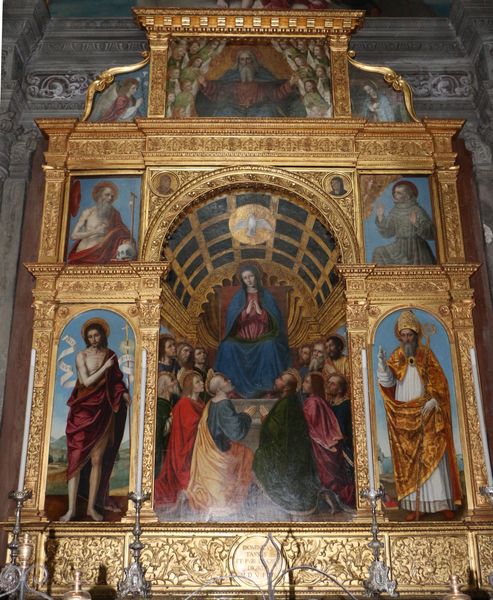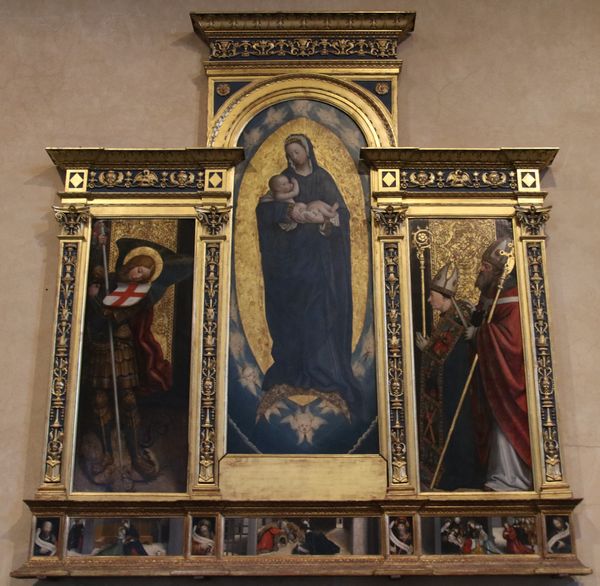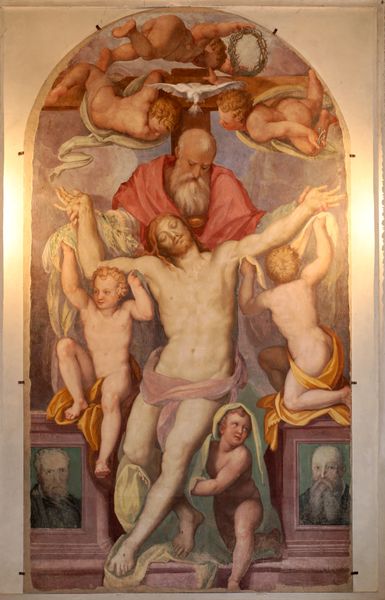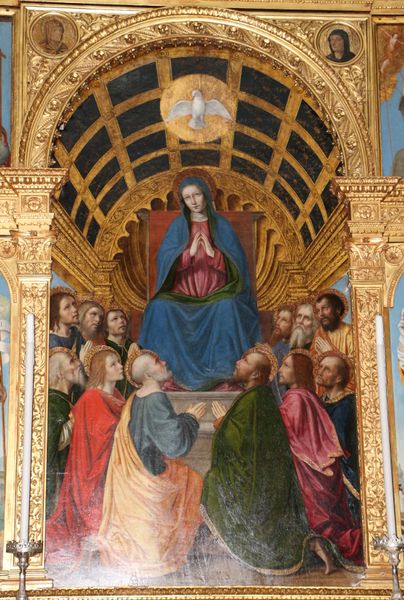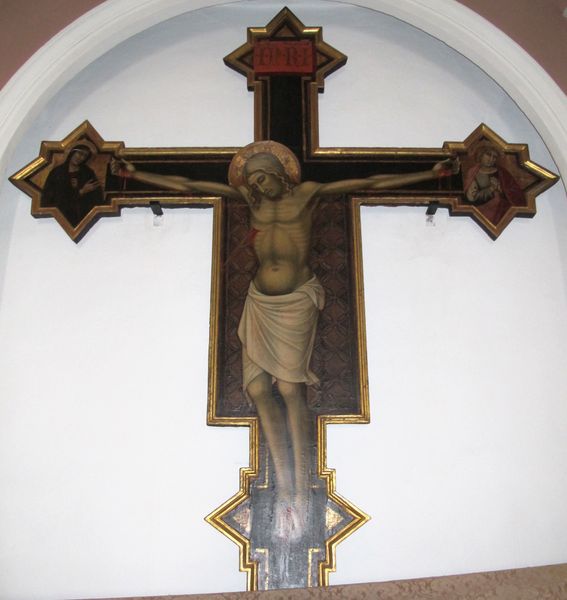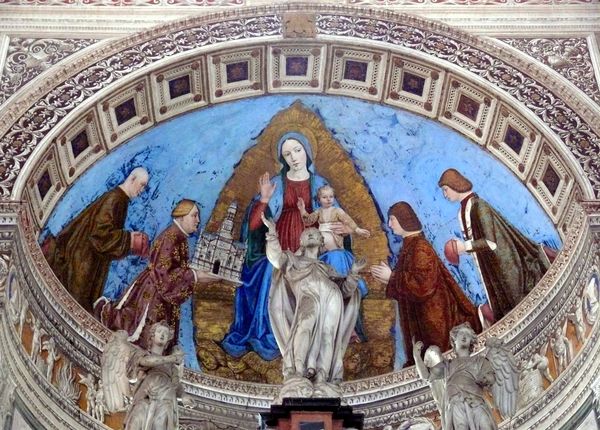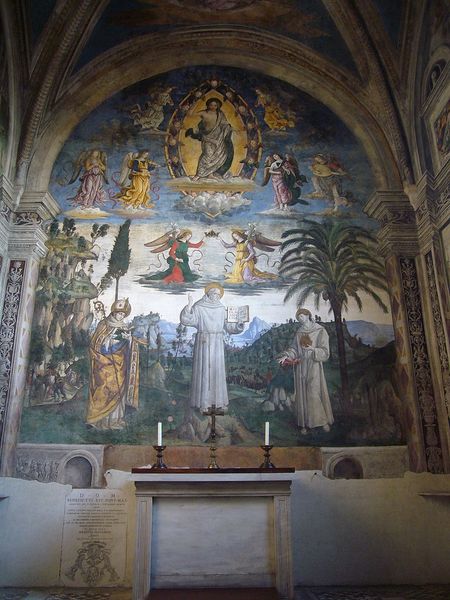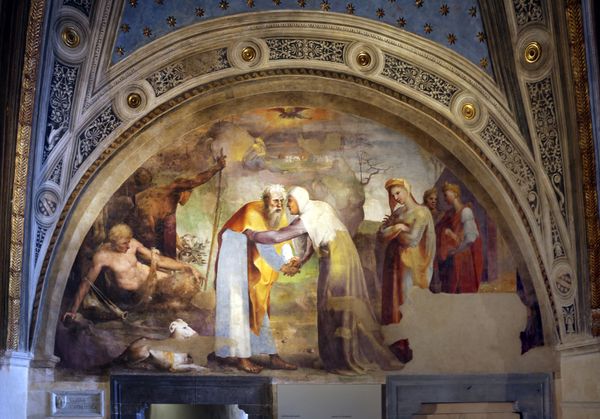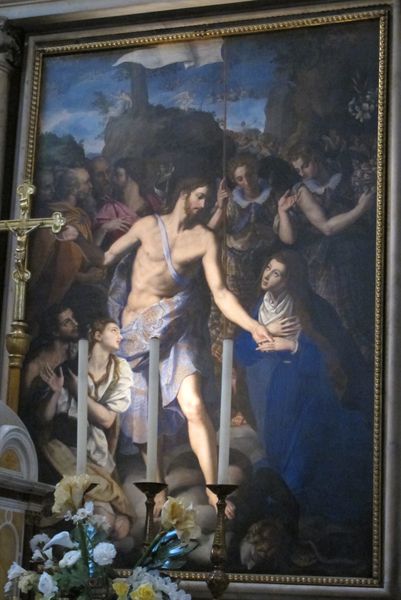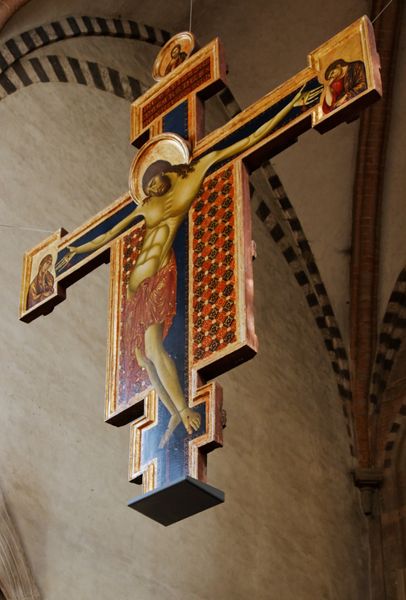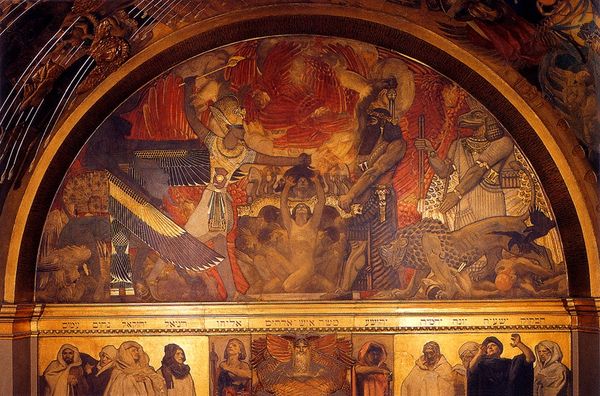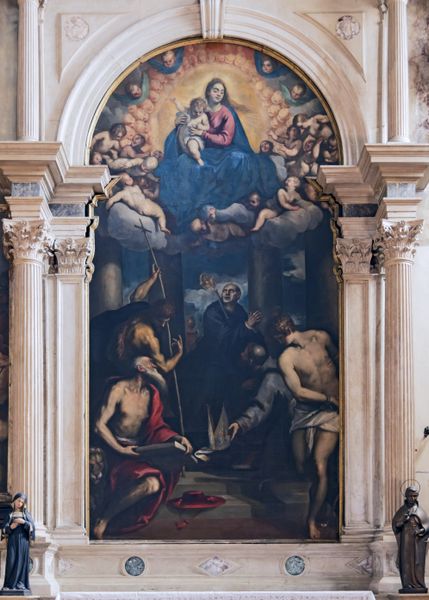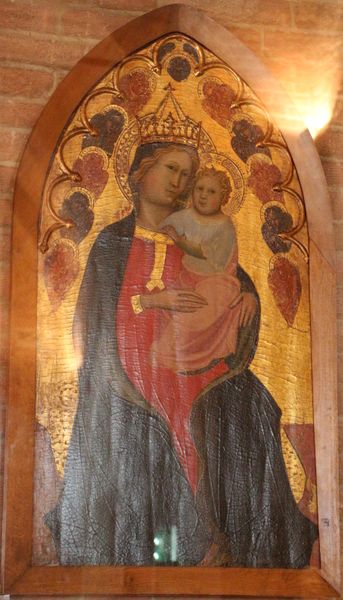
Copyright: Public domain
Mariotto Albertinelli painted this fresco of the crucifixion at the Certosa in Florence, likely in the early 16th century. The crucifixion was a common subject in Florentine art, but here it's made unique by its setting within the Carthusian monastery. The fresco places Christ's sacrifice at the center of monastic life. Angels collect Christ's blood, while below, mourners grieve. Note the skull at the foot of the cross, a vanitas symbol reminding monks of mortality and the need for spiritual devotion. Florence at this time was under the influence of Savonarola, whose puritanical reforms impacted artistic production, encouraging religious subjects and discouraging secular ones. Albertinelli, while trained in the workshop of Cosimo Rosselli alongside the more famous Fra Bartolomeo, here displays a style balancing traditional religious iconography with emerging Renaissance ideals of naturalism. Understanding this work requires us to consider the specific context of the Carthusian order, Florentine religious history, and Albertinelli's place within the artistic milieu. Such historical research helps us appreciate the painting's rich layers of meaning.
Comments
No comments
Be the first to comment and join the conversation on the ultimate creative platform.
